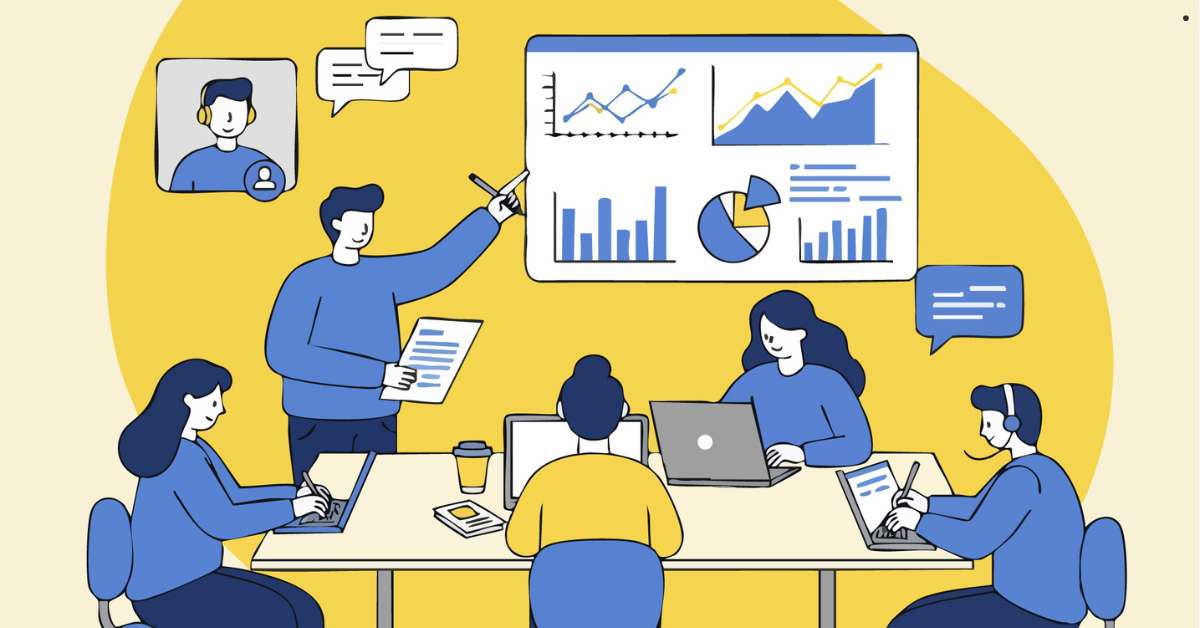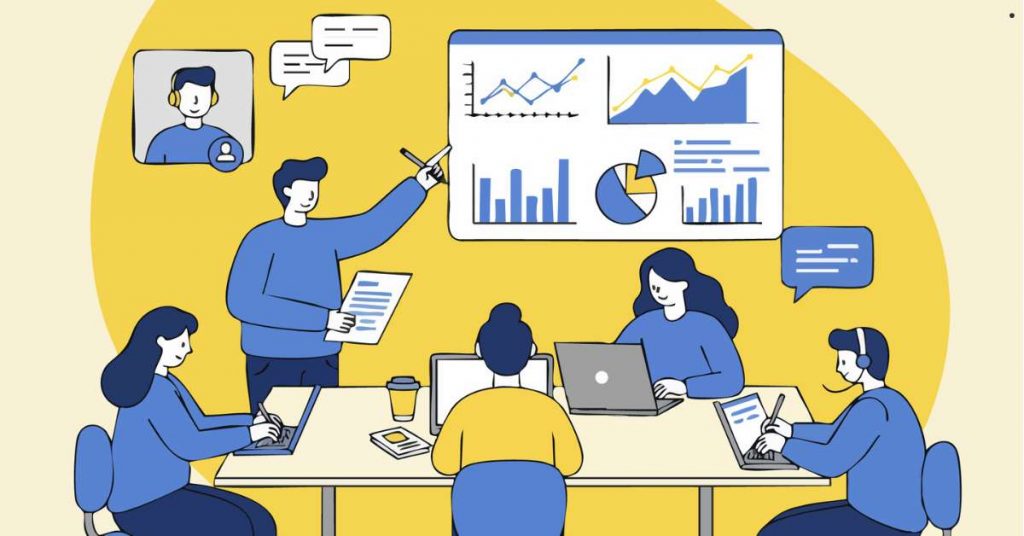Imagine walking into a future where decisions are made by gut instinct. Now flip that. Envision a world where the “gut” is backed by numbers, patterns, predictions—and you’re the person who makes sense of all that data. That’s what being skilled in data analytics means: transforming raw information into insight, strategies, and impact. For students thinking of their next step, such as enrolling in the Master of Science program at American Imperial University, mastering these skills is not just an academic pursuit—it’s a superpower in today’s data-driven world.
Real-World Uses: How Data Analytics Powers the Modern World
Healthcare & Public Health
Data analytics helps hospitals detect trends, predict disease outbreaks, and tailor treatments. For instance, by analyzing patient histories, lifestyle, environment, and genetic data, analysts can identify high-risk populations for diseases like diabetes or heart disease, enabling preventative care. During the COVID-19 pandemic, models forecasting infection spread, hospital capacity, and resource needs were data analytics in action.
Retail & Consumer Behavior
Think of recommendations on your favorite shopping site, or how stores decide which items to stock. Retailers use analytics to forecast demand, optimize pricing, personalize marketing, and manage inventory. For instance, building predictive models to anticipate which products will sell best next season—or using customer data to send targeted offers—can significantly increase sales and reduce overstock waste.
Finance, Insurance, and Risk Management
Banks and insurers rely heavily on analytics. They use it to assess creditworthiness, detect fraud in real-time, set premiums, manage portfolios, and forecast market trends. A small error in prediction could cost millions; hence financial institutions invest in people who can wrangle data, build statistical models, and quantify risk.
Supply Chain & Logistics
Global supply chains are complex. Disruptions, delays, inventory mismatches—all can cause major losses. Analytics can identify bottlenecks, optimize routes, forecast delays, and help decide where to store products. Companies like Amazon use data to decide where to locate warehouses, how to route delivery trucks, and even how to replenish stock in stores.
Manufacturing / Industry & Predictive Maintenance
Sensors on machines generate massive amounts of data. Analytics helps predict when machines might fail before they do (“predictive maintenance”), reducing downtime and saving costs. Also, manufacturers analyze production data to improve efficiency, reduce defects, and optimize resource use.
Marketing & Advertising
Analytics tells you who is likely to buy your product, when, and why. By analyzing click streams, social media engagement, customer feedback, web traffic, and market trends, marketers can optimize campaigns, target high-value demographics, allocate budget smarter, and track return on investment (ROI).
Government & Public Policy
Governments use analytics for everything from tracking unemployment, forecasting public service needs (like which areas need more health clinics or schools), to monitoring fraud, crime, or traffic flows. Data helps policy makers see what is working, what isn’t, and make more evidence-based decisions.
Sports & Entertainment
Teams use analytic tools to monitor player performance, injury risk, optimize training, and even for tactics during games. Streaming platforms use viewing data to decide which shows to produce next, and how to recommend content to users.
Environmental & Climate Analytics
Observing climate data (temperature, CO₂ levels, ice cover, sea levels) over many years, analytics helps predict climate trends, assess environmental risk, optimize resource usage (water, energy), and inform conservation policy. This is critical as the climate crisis intensifies.
Technology & AI Products
Machine learning and AI are built upon data. Whether it’s recommendation algorithms, natural language processing, automated customer support, fraud detection, image recognition—data analytics is foundational. Even tools that “learn” automatically rely on well-structured data pipelines, validation, training, and evaluation.
What Skills Underpin These Applications
To make all that work, companies look for people with:
Strong proficiency in SQL (for querying large databases), Python or R (statistical/programmatic work), Excel for basics but also for rapid prototyping.
Data visualization skills: tools like Tableau, Power BI, or custom dashboards to show data in ways decision-makers can use.
Critical thinking: being able to ask the right questions, spot biases, understand what the data doesn’t say. Improvisation and skepticism are part of the job.
Handling both structured and unstructured data; working with big data tools; understanding statistics, predictive modeling, possibly even machine learning.
Good communication: being able to translate analytic findings into clear reports, visuals, or presentation to stakeholders who may not be technical.
Why Students Should Enroll in the Master of Science at American Imperial University
Here is how your Master of Science journey can make you a “data-powered” professional:
Curriculum Focused on Real Skills
The program is structured to build not just theory but practical capabilities. As data analytics becomes more central to jobs, you want a program that gives you both foundations (statistics, algorithms, data management) and hands-on labs/case studies/projects.
Flexibility & Accreditation
American Imperial University offers online options with flexible scheduling. This means you can be working, or have other commitments, and still build skills. Accreditation ensures your degree is recognized and your skills trusted in the marketplace. American Imperial University
Mentorship and Global Networking
The program doesn’t leave you alone with data. Expert faculty, mentorship, global peer network—these help you see how analytics is being used around the world, stay updated on trends, and build connections. American Imperial University
Industry-Relevant Learning
Projects that mimic real challenges (retail forecasting, supply chain optimization, healthcare data); case studies; data tools; possibly AI-oriented modules. This means when you graduate, you aren’t just “book smart” — you have done stuff. Employers often ask “show me what you’ve built / solved.”
Career Growth & Demand
Demand for data-competent professionals is skyrocketing. According to various reports, positions in data analytics, data science, business intelligence, etc., are among the fastest-growing job sectors worldwide. Salaries tend to be above average (due to skill scarcity), and the chances of advancement are strong.
Versatility
With data analytics skills you can work in many domains: business, healthcare, government, NGOs, tech, energy, environment, etc. It’s not a niche; it’s a toolkit that applies everywhere.
How Your Life & Career Could Look After Graduating
If you already have a job in, say, marketing, operations, HR, or finance and you want to transition to data analytics, here’s a roadmap:
Step 1: Map transferable skills
You may already use metrics, dashboards, reports, or have domain knowledge (e.g. in marketing you know KPIs). These give you a “home base.” Don’t start from zero.
Step 2: Fill the technical gaps
You’ll probably need:
- Basic programming (Python, R, SQL)
- Statistics & probability
- Data visualisation (e.g. Tableau, Power BI)
- Machine learning foundations (regression, classification, clustering)
You can pick up these via MOOCs, bootcamps, or a structured programme. (American Imperial University’s MS curriculum includes modules covering those areas.)
Step 3: Build a portfolio
Nothing showcases potential like personal projects. Ideas:
- Analyse public datasets (e.g. on Kaggle)
- Reimagine dashboards for a small business you know
- Create predictive models (e.g. stock trends, health data)
- Display work on GitHub or a personal site
Step 4: Seek hybrid roles
Look for roles like “analytics associate,” “reporting analyst,” “data liaison” in your industry. These positions let you lean on what you already know while growing data skill.
Step 5: Consider an advanced degree or certification
A formal credential (like an MS in Data Analytics) helps in two ways: it signals seriousness to employers, and it organizes learning in a deeper way than random courses. The American Imperial University program, for example, spans 18 months, uses 41 US credits, and includes a capstone project that ties together theory and real use-cases.
Signs You Should (or Shouldn’t) Persist
To make this more concrete, here are a few “day in the (not distant) future” scenarios you might find yourself in after finishing the Master’s:
- Healthcare Analyst: you’re working at a hospital network or public health agency, analyzing patient data to reduce readmissions, track disease outbreaks, and support preventative programs.
- Marketing Analytics Lead: for a consumer goods company or tech startup, using customer data and market trends to identify untapped segments, optimize campaign spend, report to senior management using dashboards.
- Business Intelligence Consultant: maybe you’re hired by multiple companies to help them build analytic capacity—cleaning data pipelines, designing visualizations, advising on strategy.
- Operations or Supply Chain Data Manager: optimizing inventory, logistics, demand forecasting, ensuring goods flow smoothly even in uncertain times (think supply chain disruptions).
- Risk & Compliance Analyst in Finance: using predictive models to detect fraud, monitor regulatory compliance, forecast credit risk, and help banks or insurance firms avoid losses.
- Public Policy / Government Data Officer: helping decision makers with data-driven policy design: allocating resources, forecasting demographic changes, analyzing urban traffic or environmental impact, etc.
These are not pipe dreams. With the right skills you start with junior roles, build a portfolio, perhaps even specialize (e.g. AI, ML, Big Data) or move into leadership.
Why Now Is the Time to Act
Data is being generated faster than ever (IoT, social media, sensors, mobile devices). Organizations which know how to use that data intelligently are getting ahead. If you delay, you might miss opportunities.
Many employers are reporting skill gaps: they want people who can not only run reports, but think, model, predict, visualize, and communicate. A master’s degree gives you the time, structure, and mentorship to build beyond basics.
The cost of staying static is increasing roles are being automated, insights expected from every level. To stay relevant and competitive, upgrading your skillset is essential.
What Makes American Imperial University’s Master of Science Program Different
Here are specific features of American Imperial University’s offering that position you well:
- Online learning with mentorship and faculty support: You’re not just reading slides; there is guidance and interaction. This helps solidify learning, avoid getting stuck on technical problems, and ensures you’re current with tools and practices. American Imperial University
- Industry-relevant curriculum: The program is designed to meet evolving market needs. Your projects won’t be hypothetical—they’ll simulate or even involve real datasets, case studies, and current technologies.
- Global recognition & networking: The fact that the degree is recognized, and that you’ll interact with peers internationally, expands your horizon. It means you can work in different countries or with multinational employers.
- Focus on outcomes: Not just knowledge, but building a portfolio of work (projects, perhaps capstone, practical labs) so that when you apply for roles, you can show what you’ve done—not just what you know.
Data is messy, confusing, overwhelming. But people who can tame it—with analytics—are the ones shaping business strategies, developing healthcare solutions, informing policy, and building AI. Those are not just jobs; those are opportunities to steer change.
Frequently Asked Questions
1. What career opportunities can I pursue after completing a Master’s in Data Analytics?
Graduates can enter roles such as Data Analyst, Business Intelligence Specialist, Marketing Analyst, Operations Manager, Healthcare Data Scientist, Risk Analyst, or even Consultant. The skills are versatile, opening doors across industries including technology, finance, healthcare, government, and retail.
2. Why should I choose American Imperial University for my Master of Science program?
The program blends theory with practical application, focusing on industry-relevant tools, real-world projects, and global networking opportunities. With flexible online learning and strong faculty mentorship, it prepares students to thrive in data-driven careers worldwide.
3. Do I need a strong background in mathematics or coding to succeed in this program?
While some foundational knowledge is helpful, the curriculum is designed to build your skills step by step. Students gain hands-on experience in statistics, programming (Python, R, SQL), and data visualization, even if they start from a beginner’s level.
4. How do real-world applications of data analytics make this degree valuable?
From predicting disease outbreaks in healthcare to optimizing supply chains in global logistics, analytics is the backbone of modern decision-making. This degree gives you the toolkit to apply analytics across multiple sectors, making your expertise both relevant and in demand.
5. What sets this program apart from other Master’s in Data Analytics?
American Imperial University emphasizes outcome-based learning. Students graduate not just with theoretical knowledge but also with a portfolio of completed projects, practical case studies, and industry exposure—assets that make them job-ready and competitive in the global marketplace.




